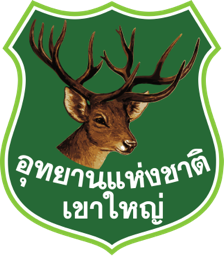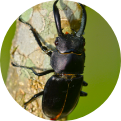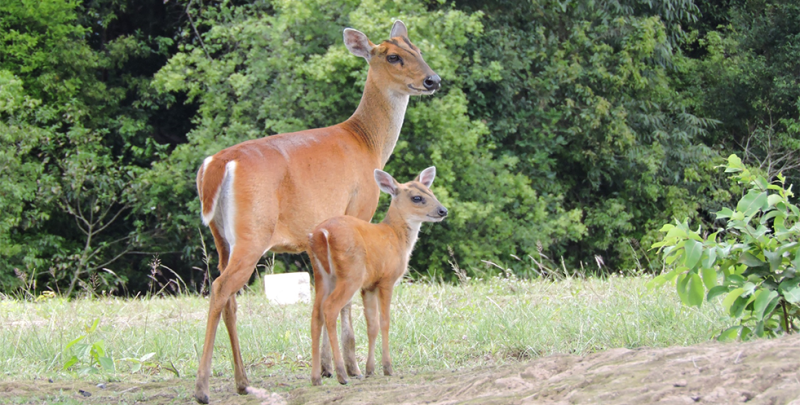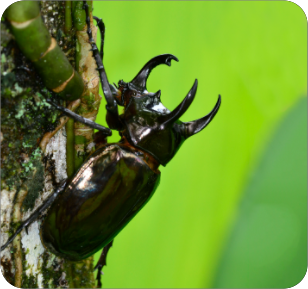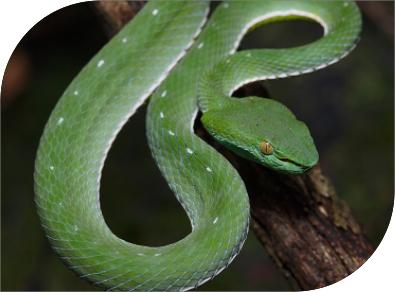Khao Yai National Park is one of the richest conservation areas in Thailand for fauna biodiversity, as its perimeters contain almost every tropical habitat. It is quite easy to see wildlife from your car or on nature trails, as they walk past or graze the grasslands both day and night.
The unique environment and climatic conditions of Khao Yai create physical and biological factors which enable encounters with rare animals and insects only possible in Khao Yai, such as the fighting giant stag beetle.
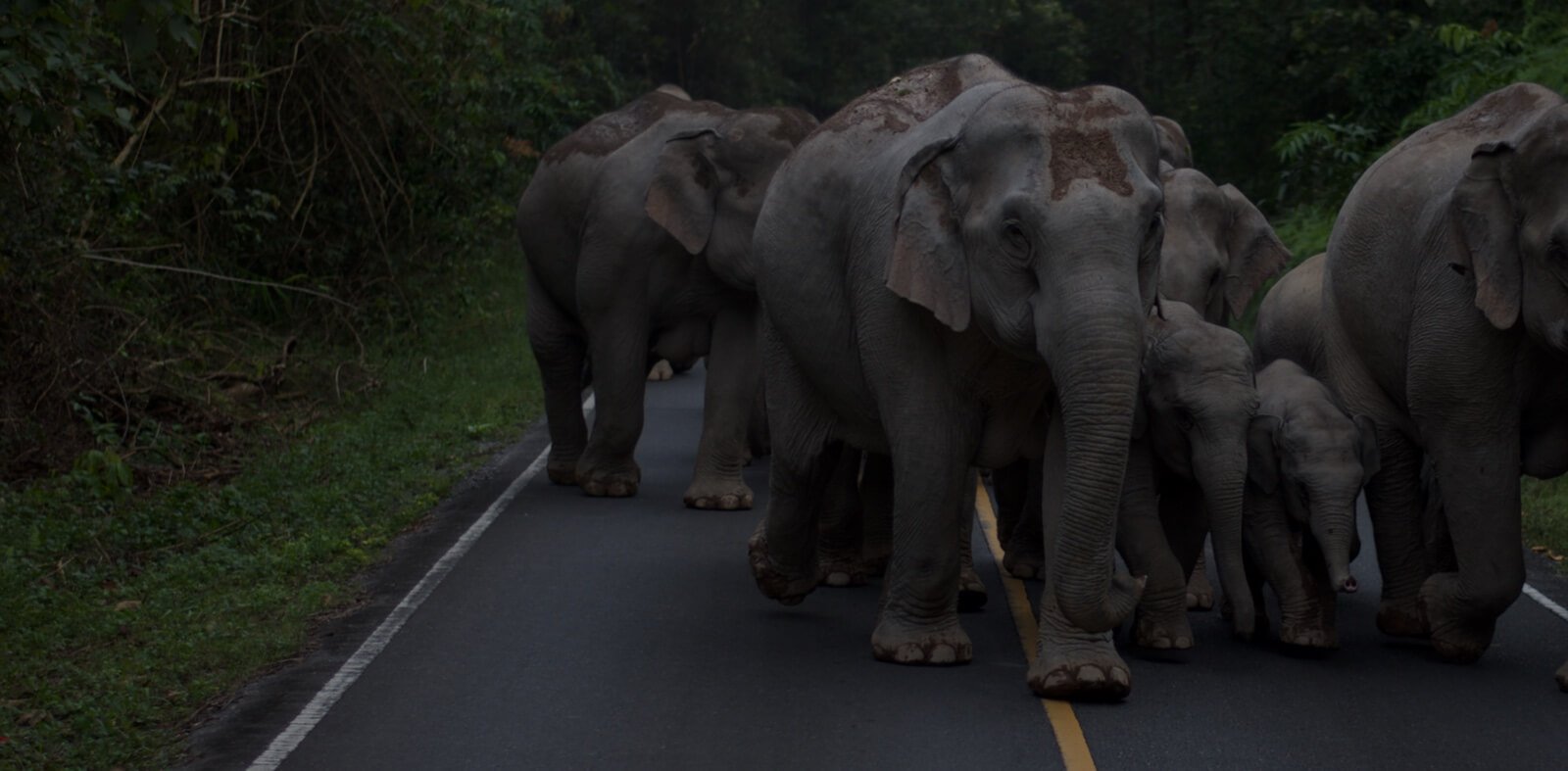
Biggest mammal of Khao Yai
The subspecies found in Khao Yai is the mainland Asian variety, Elephas maximus indicus. With an average lifespan of 60 years, height of 2-4 metres and weight of 3,000-5,000kg, they move in herds whose members share duties of danger lookout. As bull elephants reach maturity, they separate from the herd. Elephants are herbivores, but also scrape salt licks for essential minerals. They forage for 16-18 hours a day, each consuming around 200kg of food, and sleep for only 3-4 hours every night.
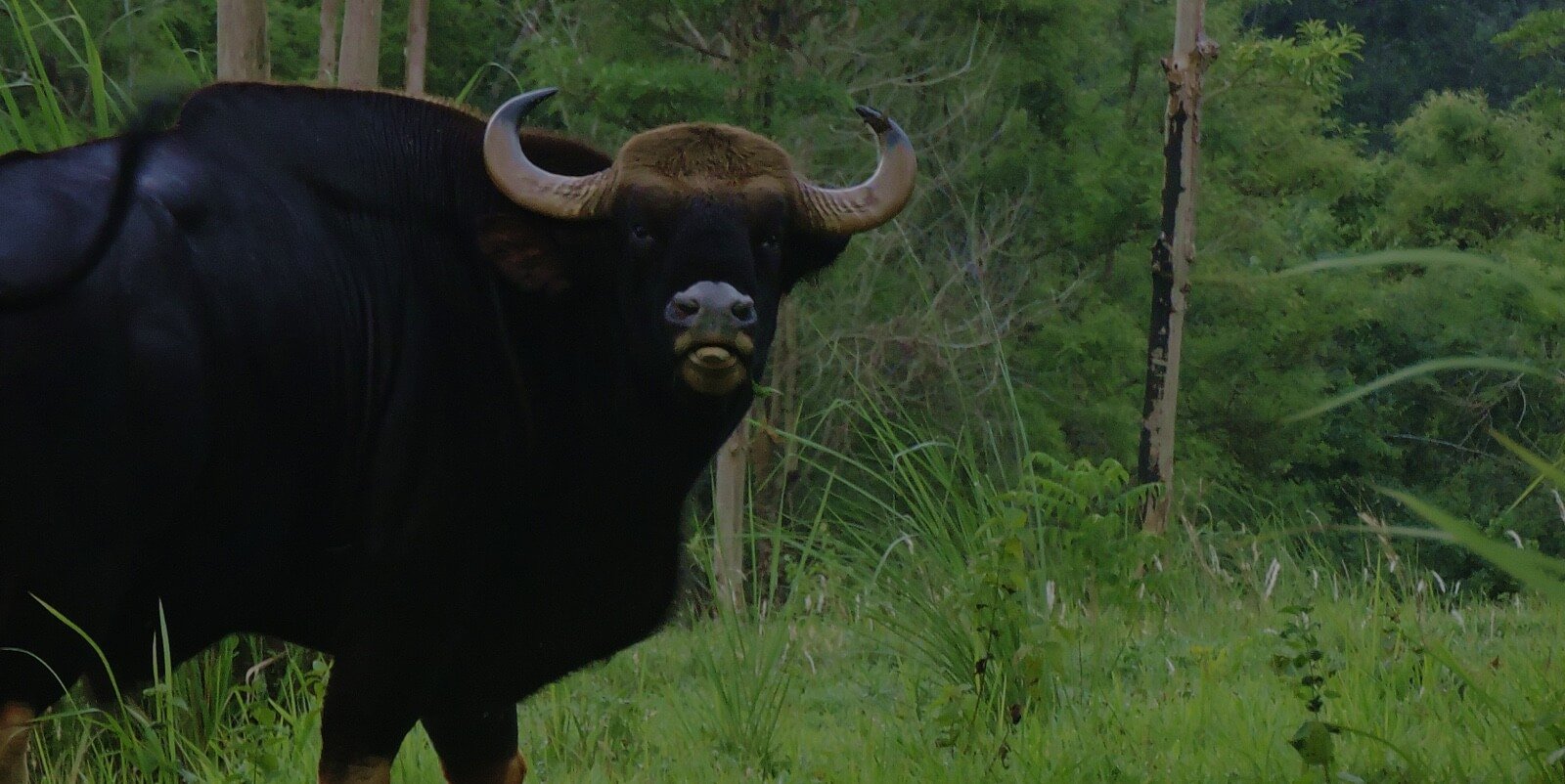
Adaptor of the forest
This big herbivore can conceal itself in nature and adapt to different environments. They can be found in many forest types near water as they have an insatiable thirst. Their diet is leaves, grass and salt licks, and they will alternate between grazing and sleeping throughout the day.
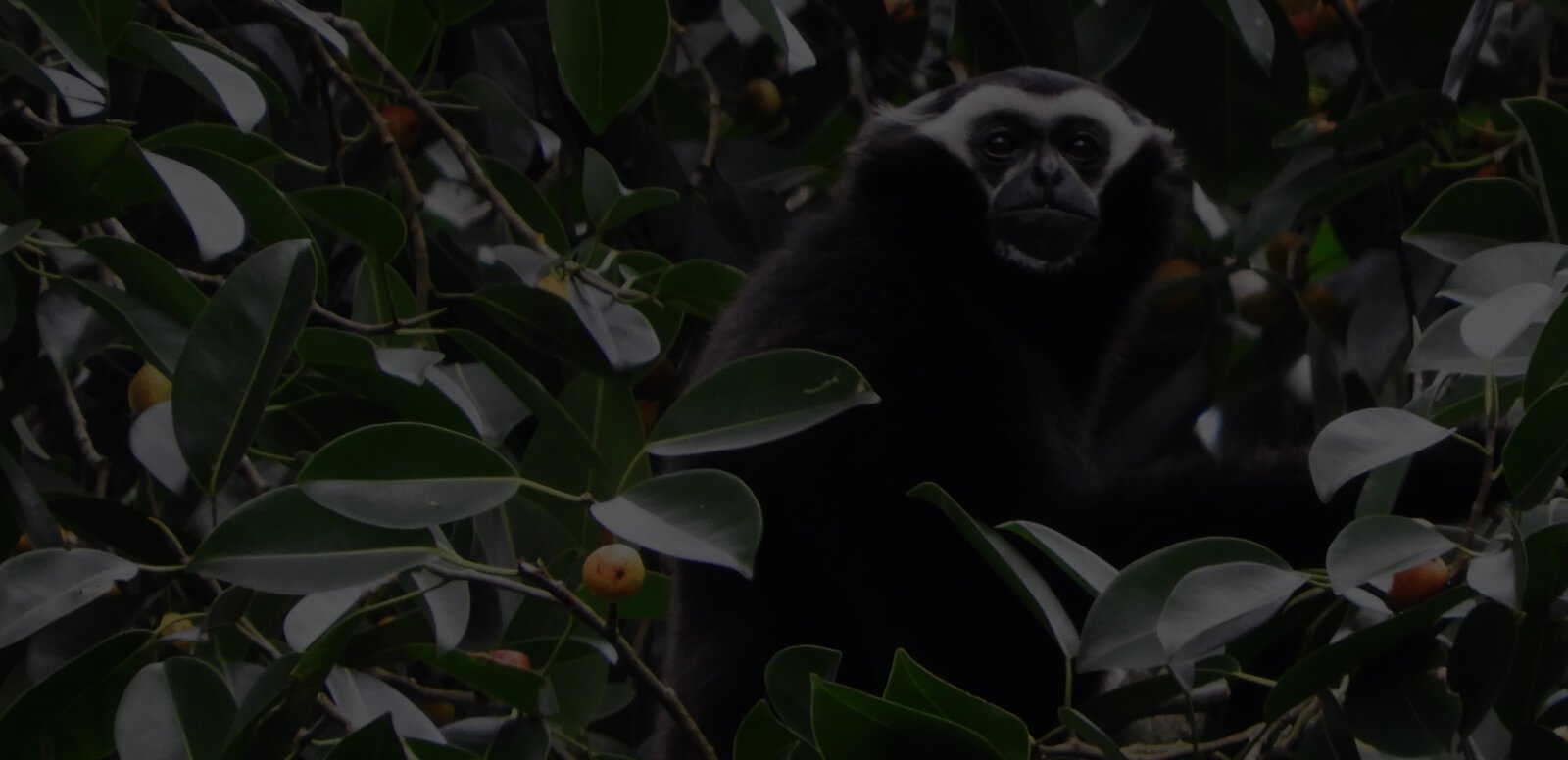
Khao Yai’s forest planters
Gibbons are the smallest apes and have an arboreal lifestyle with a core diet of fruit. They have a crucial role of seed dispersal in the forest ecosystem. There are two species of gibbon in Khao Yai National Park: the white-handed gibbon and the pileated gibbon. These two species usually live in separate habitats and territories don’t overlap. Khao Yai National Park is the only place in the world where both gibbon species share territory.
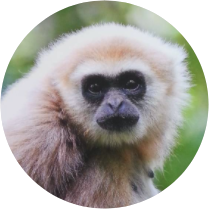 | 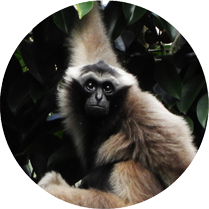 |
| White-handed Gibbon | Pileated Gibbon |
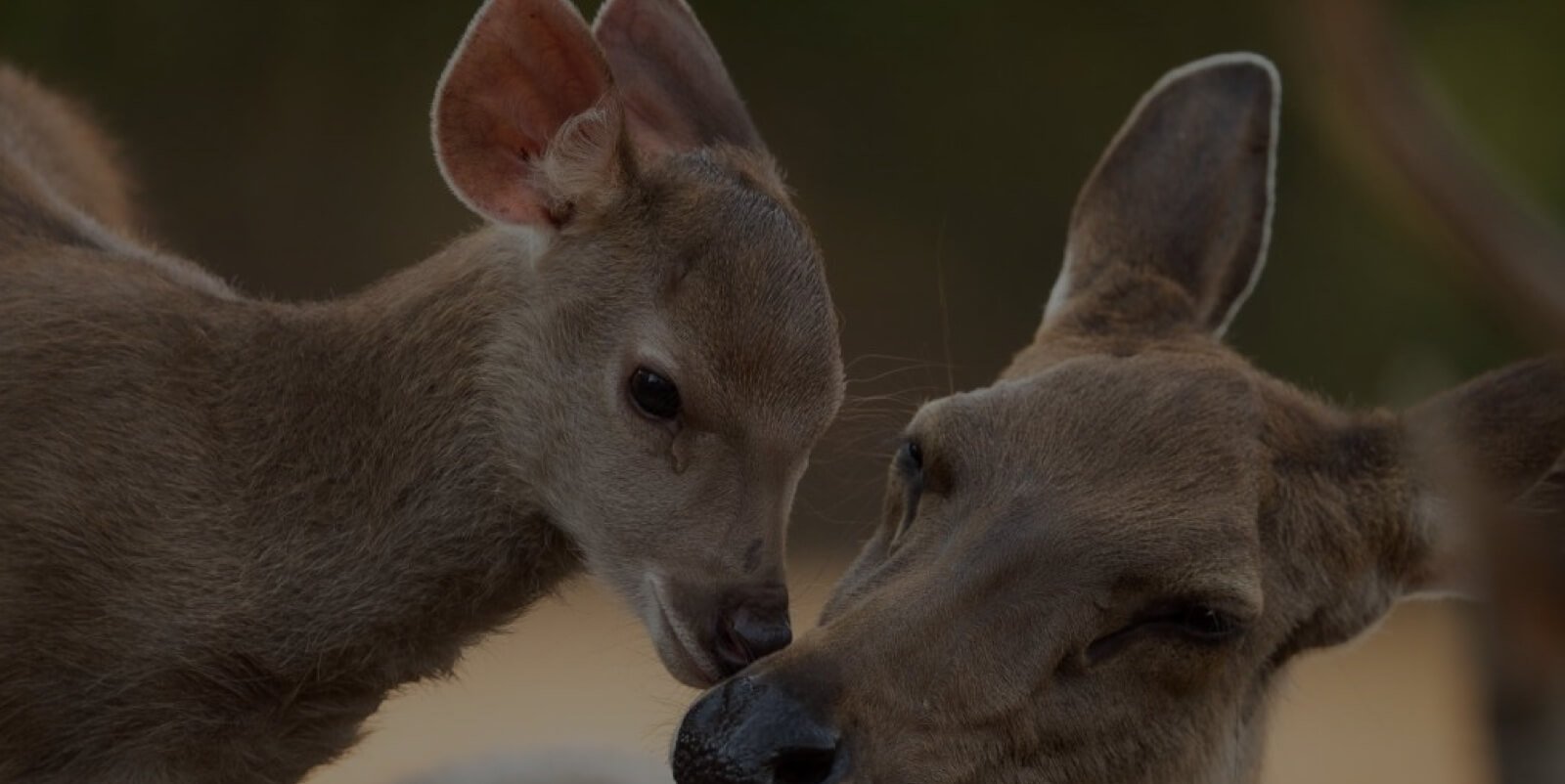
The largest deer in Thailand and Southeast Asia
the Sambar Deer has a shoulder height of 140-160cm and a weight range of 185-220kg. It lives on leaves and shoots rather than grass, but loves salt licks. They are generally solitary except for the mating season and forage from evening to early morning, sleeping during the day in dense undergrowth. Khao Yai National Park is one of the best places to observe wild deer in Thailand, as they are easily found by both day and night, when they venture out of the deep forest to graze the open grasslands at the forest’s edge.
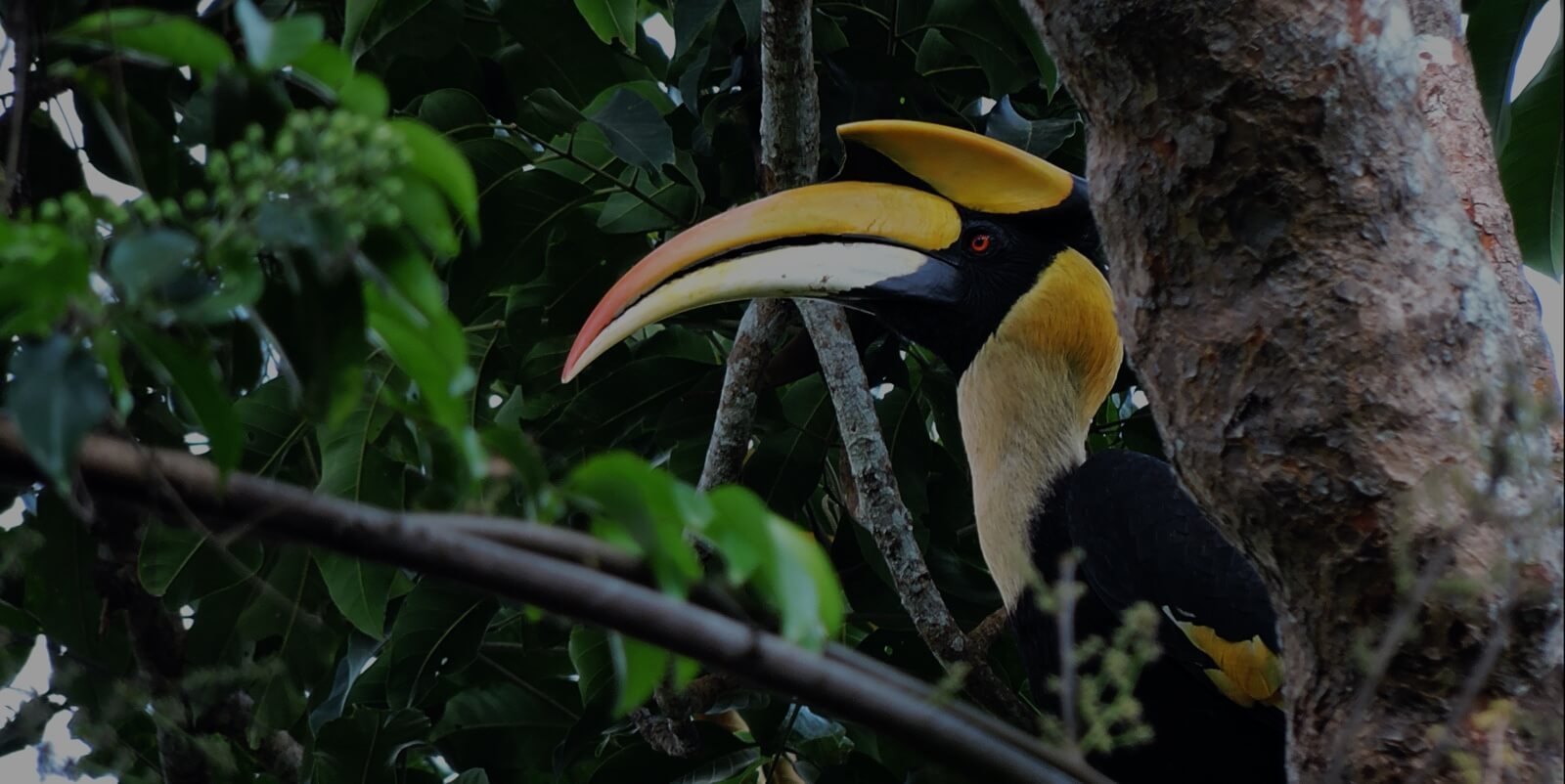
Forest dispersal agent
The hornbill’s big beak enables it to eat large seedpods, making it a planter of seeds at heights where humans cannot go. Four species of hornbill can be seen at Khao Yai National Park: the great hornbill, the oriental pied hornbill, the wreathed hornbill and Austen’s brown hornbill.
